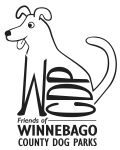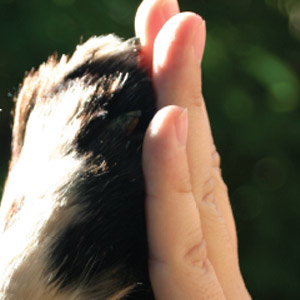 The holidays are fun for all including dogs, but dogs can get overexcited by guests and injured or poisoned by holiday decorations and treats. Here are my top holiday tips for a happy pooch!
The holidays are fun for all including dogs, but dogs can get overexcited by guests and injured or poisoned by holiday decorations and treats. Here are my top holiday tips for a happy pooch!
1. Tire your dog out before visiting or receiving holiday guests.
Keep in mind that holiday visits are not typical visits. They may involve more heightened energy than normal, since often we haven’t seen these people in a while, and dog people have a tendency to get excited around others’ pets. Your dog is more likely to behave if it’s just had a nice long walk. If they’re not dog people, your guest may be nervous, insecure, and unsure; a tired dog can help these people relax.
2. Don’t forget rules, boundaries, and limitations just because it’s the holidays!
When it comes to the aromatic holiday food, sweets, and candies lying about the house, there are many temptations for your dog. You have to remind him or her that the rules, boundaries, and limitations are the same. Use the holiday as a chance to intensify good behavior instead of intensifying bad behavior. It’s up to you to take the opportunity to make it a great holiday by working on your leadership skills!
3. Protect your dog from the cold.
Many breeds are not built to handle cold weather. Check out your local pet store for the many ways to handle this. You can buy doggie boots and gear made specifically for cold weather. There are also paw waxes that protect from the cold and aid your dog’s grip on slippery surfaces like ice or snow.
4. Let your dog check the weather.
Dogs don’t have the Weather Channel, so they don’t know why they are being denied a long walk for the day. Allow your dog to step outside and feel for itself that it is too cold or too stormy to go on a long walk. Instinctually, the dog will understand why it is coming back inside where it’s safe. But, be careful not to allow them to do this too often. They can learn to use this open door to manipulate and control you. Also, some dogs, if out in the cold for too long, will develop thicker fur and maintain their fat as a natural protection, so they may not feel the cold as intensely as we humans do. This can be an advantage if you want to continue to take your dog for walks in cold weather. However, please keep in mind that many short-haired breeds do not have this natural resistance to cold weather.
5. Be cautious when around the fireplace!
Animals are instinctual about fire; it is natural for an animal to stay away. However, during this holiday season, many owners like to dress their dogs up. Never use a product which may contain alcohol, such as hairspray, silly string, or entertainment paint, on a dog that will be around fire. Always be cautious near a fire with an animal that is wearing clothing. A stray piece of fabric can quickly cause the entire outfit to light on fire. A screen is a good way to keep a “done-up” pup safe. Also, never leave an animal alone in a room with a lit candle. As a general holiday precaution, test your smoke alarms, and keep them clean and equipped with fresh batteries at all times!
6. Be aware of dangerous holiday items.
The festive poinsettia causes dogs to vomit. Chocolate is a poisonous treat. And tinsel has sent many a dog to the emergency room, as it can easily cut up intestines. Paper-based tinsel is generally a safer option, but the plastic or metallic-based varities should not be used.
7. Protect your presents and decorations.
Remember that a dog will know if a gift contains something edible, even if you don’t. Ask your guests in advance if there is food inside the presents, and keep them out of your dog’s reach! Keep fragile ornaments toward the top of the Christmas tree; only place sturdy ones near the bottom. Often people use a pen to keep dogs away from their tree. Keep it fun by decorating the pen with ribbons. And, above all, set rules, boundaries, and limitations!
8. I don’t recommend giving a puppy as a holiday gift.
Most often, giving a puppy for emotional reasons turns out badly. Love is never the problem. Who doesn’t love a puppy? But most people don’t know how to keep a puppy balanced, and the puppy is going to suffer the consequences from the first day. In particular, if a person doesn’t know they are getting a puppy, they will be in the wrong state of mind to receive him or her. I highly recommend holding off on affection for a week or, at the very least, until the end of the day when the puppy is quiet, in his kennel, and ready for sleep. This is virtually impossible to do if you just received a puppy as a surprise!
I strongly believe that people need to have some basic knowledge about the commitment and responsibility of pet ownership and how to play a leadership role even though it’s a puppy. The beautiful part about starting with a puppy is that, if you know what to do, you are going to prevent problems. But if you don’t, you are going to create problems. We have to take the same philosophy as adopting a child. You don’t just give a kid away. You have to get the whole family involved. Everyone has to understand the responsibility they are taking on.
9. Live in the moment! Be happy! Laugh! Celebrate!
Want to do something special for your dog for the holidays? Be balanced. Don’t be nervous. Don’t be fearful. Don’t be tense. Don’t think about anything that makes you sad, depressed, or angry. Really live in that moment. Believe it or not, that is one of the biggest gifts we can give to our dog–and ourselves! Everyone, rich or poor, can practice this simple activity. It has more meaning than any gift you can buy.
Live in the now, with your dog right next to you and your family around you. Your dog is going to get the benefit of it, particularly if you don’t have days like this on a regular basis. This special day will linger in his or her memory, and, hopefully, you can learn to practice these days more often, not just during the holiday season.
Read more: http://www.cesarsway.com/tips/seasonal/top-holiday-tips#ixzz2lbTO8xHJ










